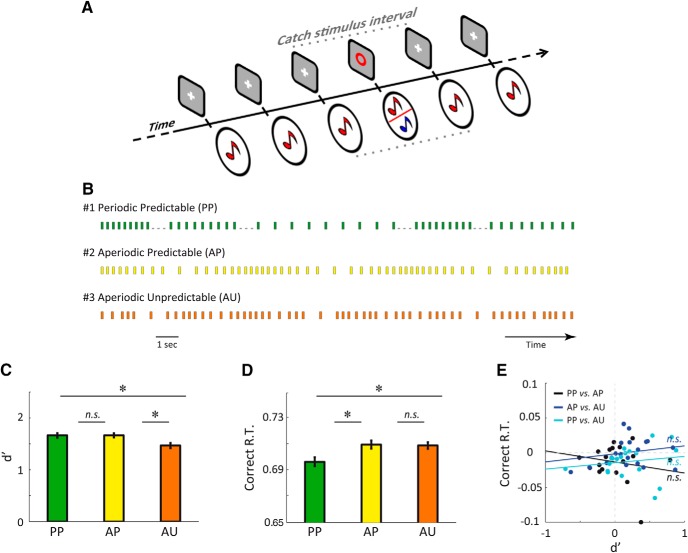Figure 1.
Experiment 1. A, Each trial consisted of a stream of simultaneous auditory and visual stimuli. Reference stimuli corresponded to a 440 Hz (red) pure tone co-occurring with a white cross. A red circle specified occasional target stimuli, on which participants had to discriminate between a standard (440 Hz, red) and deviant (880 Hz, blue) pure tone. B, We investigated three conditions whereby the presented auditory streams were : 1) periodic predictable (PP; at 1.3, 2.25, 2.9, 3.45, or 3.9 Hz), 2) aperiodic predictable (AP), or 3) aperiodic unpredictable (AU). Notice that similar SOAs were used across the three conditions. C, D, Average sensitivity (C, d′) and correct reaction times (D, Correct R.T., in seconds) for the three conditions. E, Pearson correlation across participants between the effect of temporal predictability (AP vs AU)—or stimulus periodicity (PP vs AP); or both (PP vs AU)—on d′ and on Correct R.T. Error bars indicate SEM. Stars indicate significant differences (n = 19; p < 0.05). n.s., Significant absence of differences (Bayes factor, <0.33).

